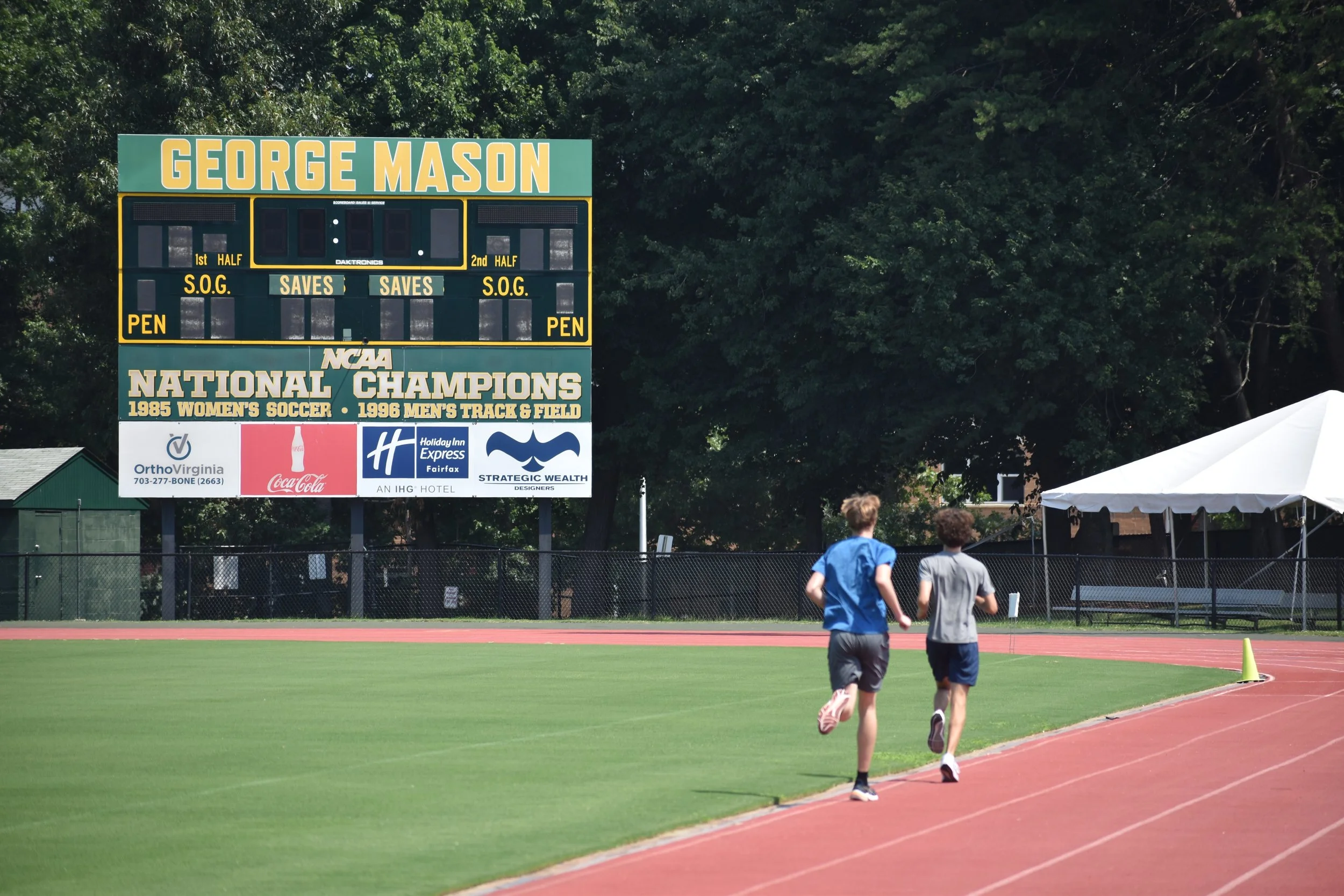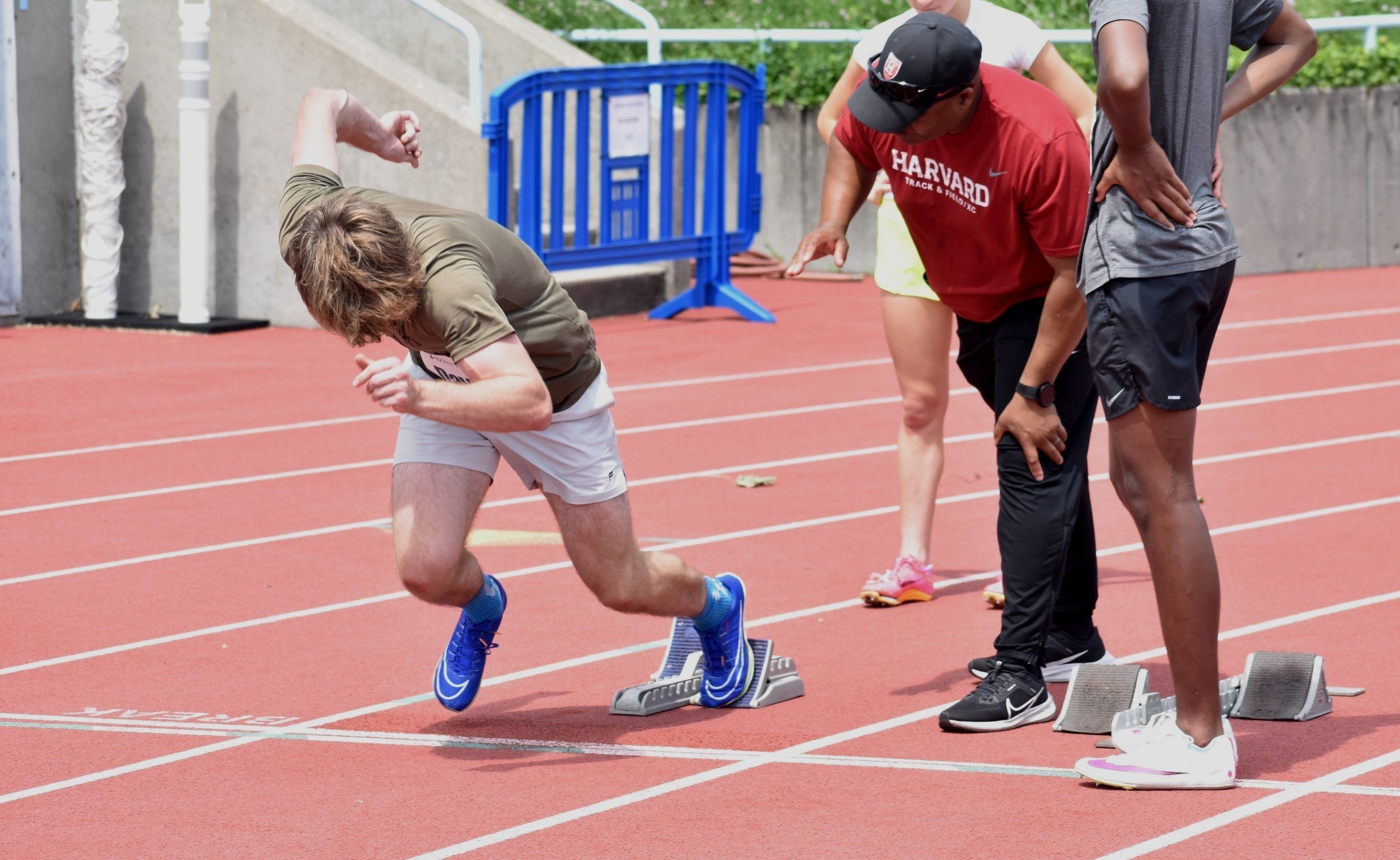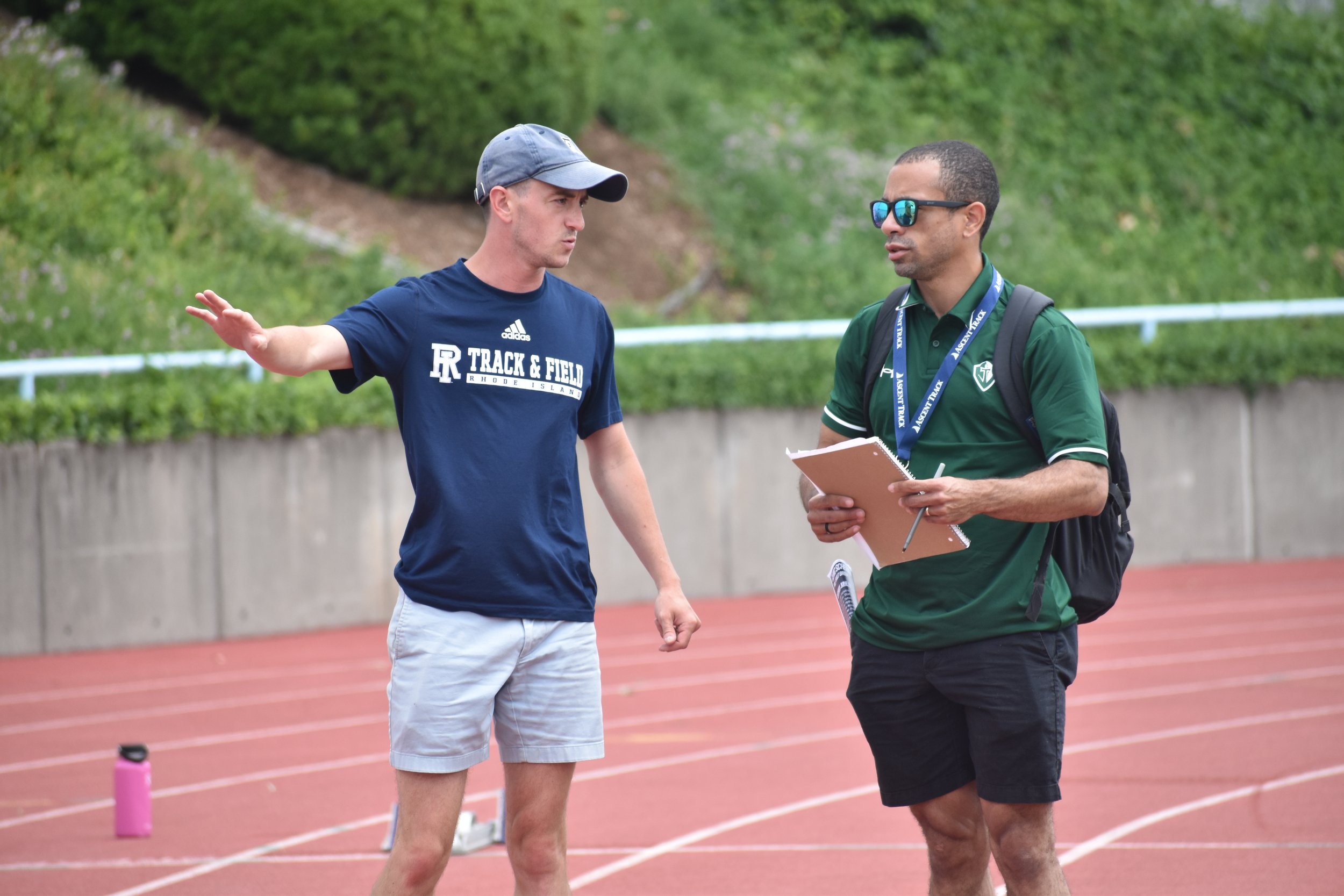
171. Ancillary and speed training for the distance events
Learn how to integrate strength, mobility, and speed development into distance programs in this comprehensive, self-paced course led by veteran instructor and founder of USTFCCCA’s Track & Field Academy, Boo Schexnayder.
~7 Hrs. Duration | 26 Video Lessons | 40 Pages of Course Materials | 14 Knowledge Retention Checks
Course instructor
BOO SCHEXNAYDER
Director, Consultant, Coach
SAC Speed
With over 40 years of experience in coaching and consulting, Boo Schexnayder is regarded as one of the world’s premier field event coaches.
He was the mastermind behind 26 NCAA Champions during his collegiate coaching career, was part 13 NCAA Championship teams and a pair of Juco National titles, and he has developed a host of conference champions and All-Americans.
Schexnayder has also been a prominent figure on the international scene. He has coached 18 Olympians and 7 Olympic/World Championship medalists, and served on coaching staffs for Team USA to the 2003 Pan Am Games in Santo Domingo, the 2006 World Junior Championships in Beijing, and was the Jumps Coach for Team USA at the 2008 Olympics in Beijing.
-
Schexnayder has been just as successful off the track. He is certified at Level I, II and III, and owns the prestigious Master Coach Designation from USA Track and Field. He is also certified by the NSCA as a Strength and Conditioning coach.
Schexnayder has been heavily involved in Coaching Education. He formerly served as national chair of USATF’s Coaching Education Committee, Jumps Subcommittee chair, and chair of the Biomechanics subcommittee.
Schexnayder was also the founder of the Track and Field Academy, the educational branch of the US Track and Field and Cross Country Coaches Association. He served as program director from its inception in 2009 through 2017, and still serves as an instructor in biomechanics, training design, and event-specific courses.
GET ACCESS:
COURSE DESCRIPTION
INTEGRATE STRENGTH, MOBILITY, AND SPEED DEVELOPMENT INTO DISTANCE PROGRAMS
The Ancillary and Speed Training for the Distance Events course provides a comprehensive framework for integrating high quality technical, strength, mobility, and speed development into middle-distance and distance running programs.
Led by renowned coached and founder of the USTFCCCA Track and Field Academy, Boo Schexnayder, the course outlines a progression of training methods including:
Dynamic flexibility
Sprint development
Hurdle mobility
Circuit training
General strength work
Medicine ball routines
Plyometrics
Weight training
Speed development
Each method is selected for its contribution to improving running economy, mechanics, durability, speed, and overall performance.
Coaches and athletes will learn how to structure these elements across training phases, using them not as “extras,” but as essential tools to build resilient, efficient, and faster middle-distance and distance runners
GET ACCESS:
COURSE LAYOUT
01. DYNAMIC FLEXIBILITY EXERCISES
Dynamic flexibility exercises involve moving joints through large ranges of motion in a fast, controlled manner to improve mobility and neuromuscular responsiveness. This chapter explains exercise structure, benefits for running efficiency and injury prevention, and emphasizes proper execution to maximize performance and diagnostic value.
VIDEO: Dynamic Flexibility Exercises
STUDY NOTES: Dynamic Flexibility Exercises
KNOWLEDGE RETENTION CHECK: Dynamic Flexibility Exercises
02. SPRINT DEVELOPMENT DRILLS
Sprint development drills are exercises that build coordination, flexibility, and technical awareness without replicating full sprinting. This chapter discusses the benefits of sprint drills for technical refinement and diagnostic use, and stresses the coach’s role in transferring drill skills to actual sprint performance.
VIDEO: Sprint Development Drills
STUDY NOTES: Sprint Development Drills
KNOWLEDGE RETENTION CHECK: Sprint Development Drills
03. HURDLE MOBILITY EXERCISES
Hurdle mobility exercises use hurdles to develop mobility, coordination, posture, and neuromuscular efficiency through structured walking or skipping patterns. This chapter highlights their role in improving range of motion, core and pelvic stability, and running economy, while stressing precise technique to maximize benefits and avoid reinforcing poor habits.
VIDEO: Hurdle Mobility Exercises
STUDY NOTES: Hurdle Mobility Exercises
KNOWLEDGE RETENTION CHECK: Hurdle Mobility Exercises
04. CIRCUIT TRAINING
Rather than focusing on a single skill, circuit training integrates a structured series of exercises to build glycolytic fitness, support recovery, and protect against injury through varied movement patterns. It serves as a strategic complement to running by enhancing durability, reducing repetitive stress, and maintaining fitness even with slightly lower mileage, provided that execution and exercise variety are emphasized.
VIDEO: Circuit Training
STUDY NOTES: Circuit Training
KNOWLEDGE RETENTION CHECK: Circuit Training
05. GENERAL STRENGTH CIRCUITS
General Strength Circuits center on bodyweight exercises performed in a structured circuit format to build strength, coordination, and balance across the entire body. They serve as a foundational tool for improving mechanics, correcting imbalances, and preventing repetitive-stress injuries.
VIDEO: General Strength Circuits
STUDY NOTES: General Strength Circuits
KNOWLEDGE RETENTION CHECK: General Strength Circuits
06. MEDICINE BALL TRAINING
Medicine ball training blends strength, coordination, and impact stabilization through tossing and catching movements that engage the core in a highly functional way. Similar to general strength circuits but with added postural demands, these routines enhance strength, flexibility, and injury resistance while breaking repetitive movement patterns to support better running posture and durability.
VIDEO: Medicine Ball Training
STUDY NOTES: Medicine Ball Training
KNOWLEDGE RETENTION CHECK: Medicine Ball Training
07. MULTIJUMP TRAINING
Multijump training, or plyometrics, develops reactive strength, tissue resiliency, and running economy by exposing athletes to controlled, high-impact jumping exercises. Through progressions like remedial bounds, in-place jumps, extended bounds, and depth jumps, this method enhances vertical force application, speed development, and power endurance—making it a powerful performance and injury-prevention tool when matched to athlete level and training phase.
VIDEO: Multijump Training
VIDEO: Remedial Vertical Bounds
VIDEO: In-Place Jumps
VIDEO: Extended Bounds
VIDEO: Depth Jumps
STUDY NOTES: Multijump Training
KNOWLEDGE RETENTION CHECK: Multijump Training
08. WEIGHTLIFTING
Weight training for distance runners focuses on developing force, refining mechanics, and preventing injuries through three key categories: Olympic lifts, Static lifts, and Bodybuilding circuits. Each serves a distinct role—enhancing power and sequencing, stabilizing lever systems, or promoting hormonal recovery—and when programmed strategically, they complement endurance work without adding unwanted bulk.
VIDEO: Weightlifting 101
VIDEO: Olympic Lifts
VIDEO: Static Lifts
VIDEO: Bodybuilding
STUDY NOTES: Organizational Principles of Weight Training Periodization
KNOWLEDGE RETENTION CHECK: Organizational Principles of Weight Training Periodization
09. TRAINING SPEED
Speed training plays a decisive role in distance performance by improving mechanics and efficiency, and the ability to surge and kick late in races. Proper speed training and programming also plays a major role in helping to prevent injuries.
VIDEO: Training Speed 101
STUDY NOTES: Training Speed 101
KNOWLEDGE RETENTION CHECK: Training Speed 101
VIDEO: Acceleration Development Training
STUDY NOTES: Acceleration Development Training
KNOWLEDGE RETENTION CHECK: Acceleration Development Training
VIDEO: Resisted Sprint Training
STUDY NOTES: Resisted Sprint Training
KNOWLEDGE RETENTION CHECK: Resisted Sprint Training
VIDEO: Speed Development Training
STUDY NOTES: Speed Development Training
KNOWLEDGE RETENTION CHECK: Speed Development Training
VIDEO: Speed Endurance Training
STUDY NOTES: Speed Endurance Training
KNOWLEDGE RETENTION CHECK: Speed Endurance Training
VIDEO: Programming Speed Training
STUDY NOTES: Programming Speed Training
KNOWLEDGE RETENTION CHECK: Programming Speed Training
10. KEY INVESTMENTS AND FINAL PROGRAMMING NOTES
VIDEO: Key Investments and Final Programming Notes
DOCUMENT: Additional Resources
11. FOLLOW—UP QUESTIONNAIRE AND CERTIFICATION
VIDEO: Follow-Up Questionnaire and Certification
DOCUMENT: Certificate of Completion
GET ACCESS:
What to Expect
EXPERT INSTRUCTORS
Our instructors are proven track & field veterans with experience as educators, program directors, and coaches at the collegiate, professional, and international levels. Each course has been meticulously planned and prepared by its instructor to ensure a comprehensive learning experience for every student.
SELF-PACED LEARNING
Learn on your own terms in our self-paced educational environment. Progress through video lessons, review study guides, and complete knowledge retention checks all on your own schedule. You can even skip sections and return to them later. There’s no time requirement for finishing the course. Once you buy it, you can access it forever.
DOWNLOADABLE CONTENT
Each course includes supplementary documentation – from study guides and glossaries to diagrams and inventories. All of this documentation is downloadable. Save it, print it, and take it with you to practices and meets to make an immediate impact with your newfound knowledge. Videos you can access wherever you have an internet connection.
KNOWLEDGE RETENTION CHECKS
Complete each course confidently with the help of our knowledge retention checks. After every module, these short quizzes test your knowledge of key concepts to ensure your grip on the material is strong.
Knowledge retention checks are optional unless you intend to receive a Certificate of Achievement upon completion, which requires an 80% or better on all.
CERTIFICATE OF ACHIEVEMENT
Showcase your knowledge to administration and staff with a Certificate of Achievement. You’ll have the option to request one of these if you’ve completed every module of the course and passed all knowledge retention checks with a score of 80% or higher.
GET ACCESS:
Frequently asked questions
Don’t see your question below? Contact us.
-
No, you can choose to enroll at any time you’d like, and take however much time you want to; the course will always be there for whatever timeline suits you.
-
Yes and no– it is not possible to download the video lessons, but you can download all PDF materials.
-
There is no time limit to your login, and you can go back and look at any part of the course you want at any time.
-
You must show that you have an understanding of the material by achieving a mark of 80% or higher on the Knowledge Retention Checks– but don’t worry, you can take those Knowledge Retention Checks more than one time if need be.
-
For any course content, we encourage you to write the questions in the Ascent Track Discord in each class section. For any technical issues, you can contact us at support@ascenttrackclinics.com









